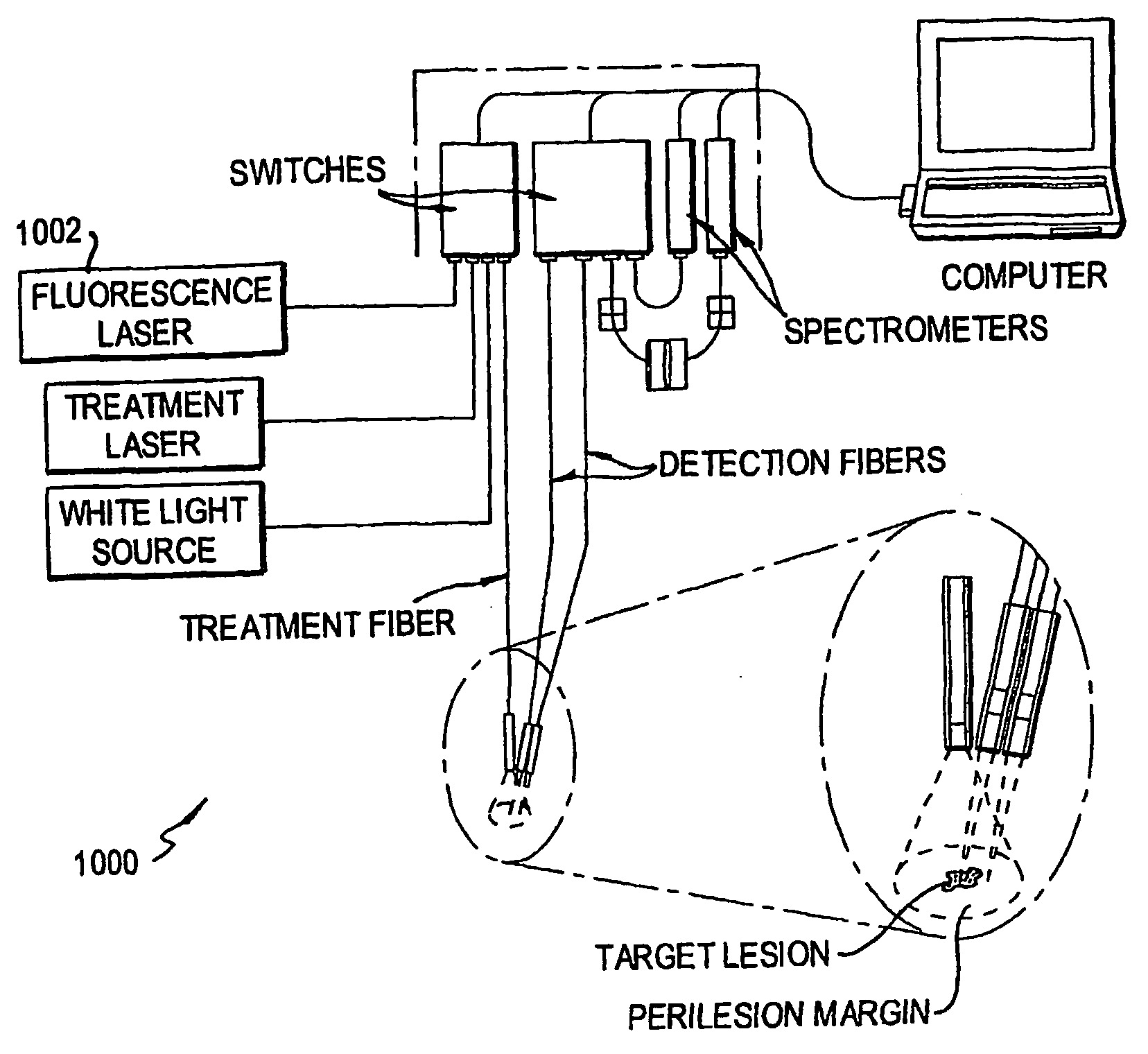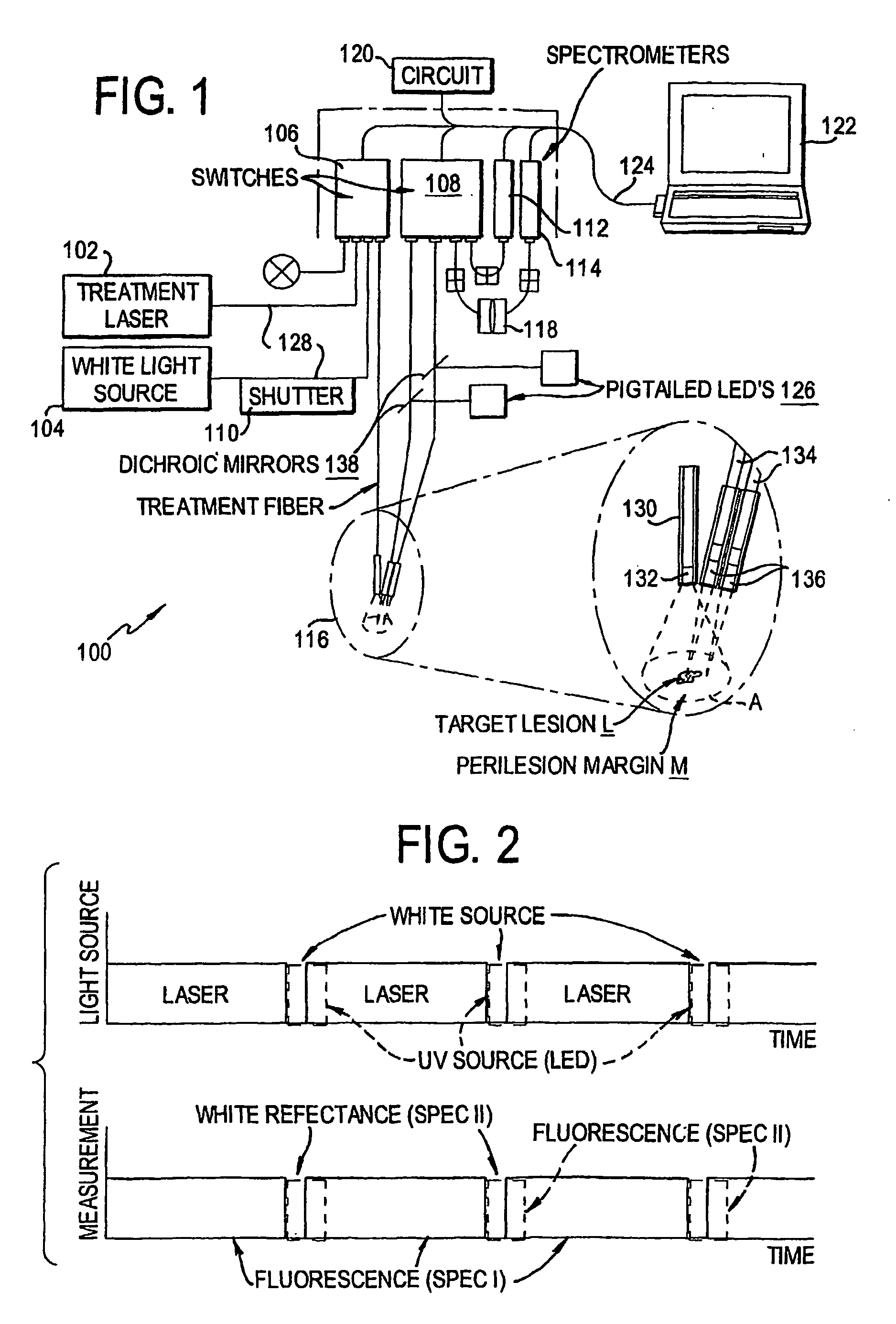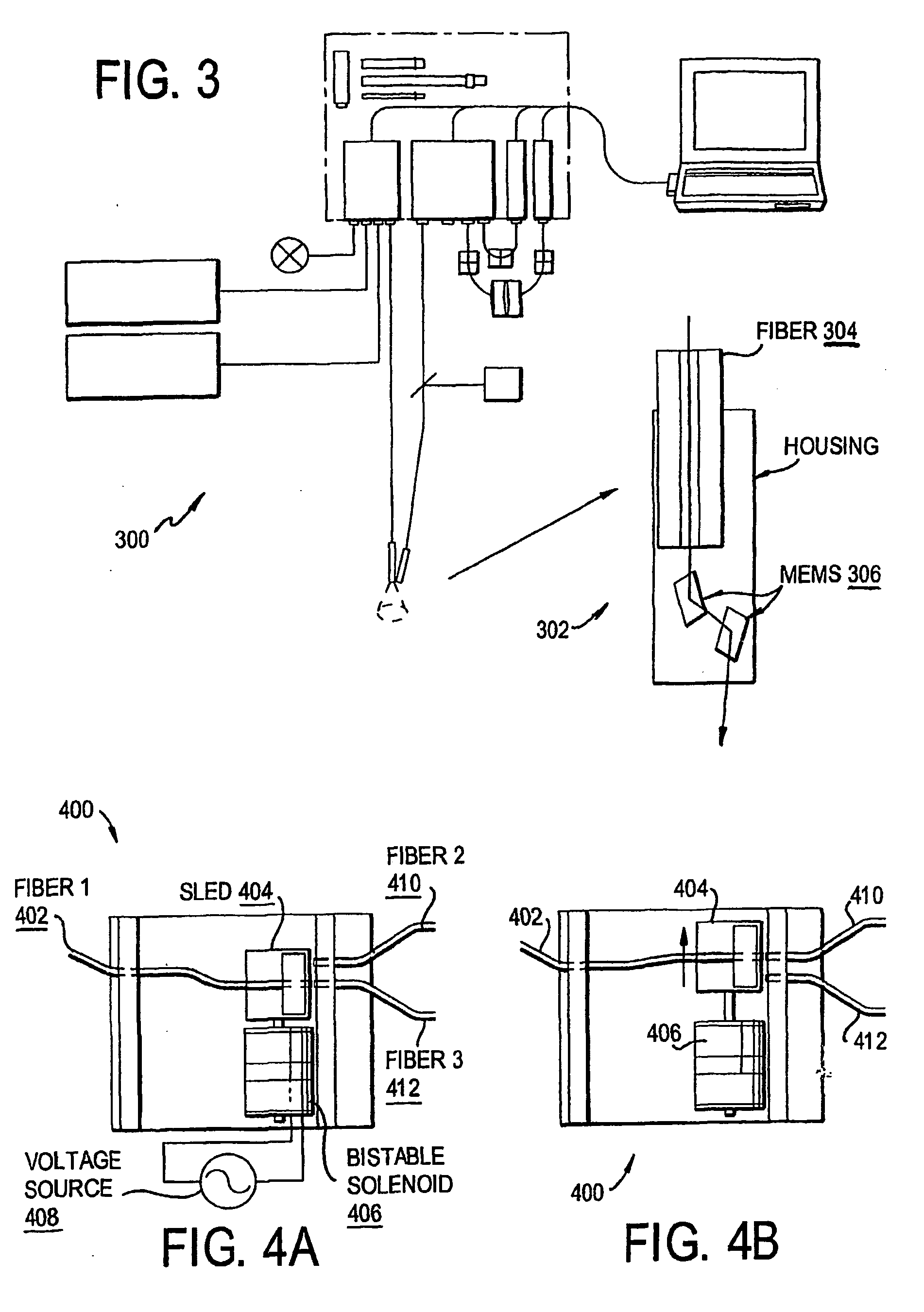Photodynamic therapy with spatially resolved dual spectroscopic monitoring
a dual-spectroscopic and spatial resolution technology, applied in the field of photodynamic therapy (pdt), can solve the problems of reducing accuracy and insufficient accuracy of known techniques, and achieve the effect of accurate characterization
- Summary
- Abstract
- Description
- Claims
- Application Information
AI Technical Summary
Benefits of technology
Problems solved by technology
Method used
Image
Examples
Embodiment Construction
[0023]Preferred embodiments of the present invention will be set forth in detail with reference to the drawings, in which like reference numerals refer to like elements or operational steps throughout.
[0024]An instrument according to a first preferred embodiment of the present invention is shown in FIG. 1 as 100. As shown, the instrument includes a treatment laser (such as a dye laser) 102, a white light source (such as a tungsten halogen or xenon lamp) 104, fiber optic switches 106, 108, a shutter 110, two thermoelectrically cooled spectrometers 112, 114, an optical probe 116, an optical filter 118, circuitry 120, housings (not shown), and a computer 122. The computer 122 and the spectrometers 112, 114 communicate through a USB cable connection 124. Each of the spectrometers 112, 114 has reserved auxiliary (AUX) pins on its on-board circuitry. The AUX pins are connected to the LEDs 126, shutter 110, and fiber optic switches 106, 108 via external circuitry 120. Transistor-transistor...
PUM
 Login to View More
Login to View More Abstract
Description
Claims
Application Information
 Login to View More
Login to View More - R&D
- Intellectual Property
- Life Sciences
- Materials
- Tech Scout
- Unparalleled Data Quality
- Higher Quality Content
- 60% Fewer Hallucinations
Browse by: Latest US Patents, China's latest patents, Technical Efficacy Thesaurus, Application Domain, Technology Topic, Popular Technical Reports.
© 2025 PatSnap. All rights reserved.Legal|Privacy policy|Modern Slavery Act Transparency Statement|Sitemap|About US| Contact US: help@patsnap.com



